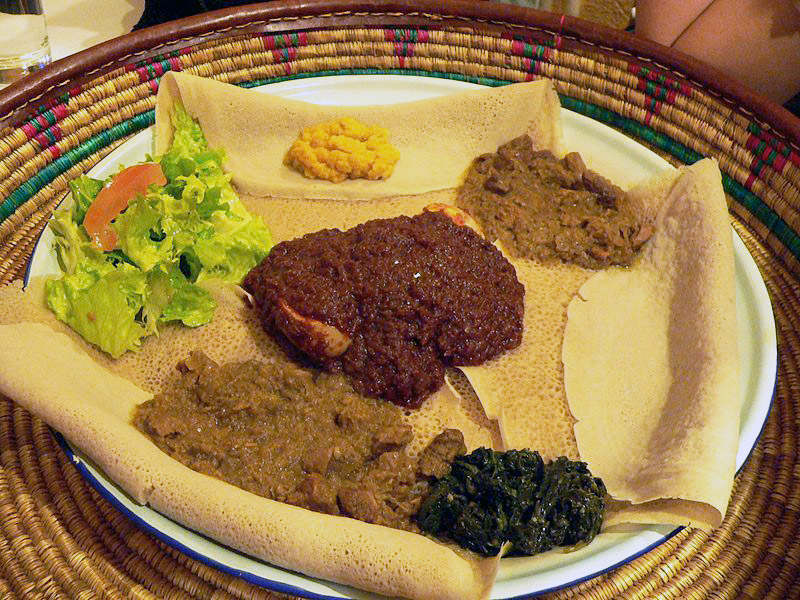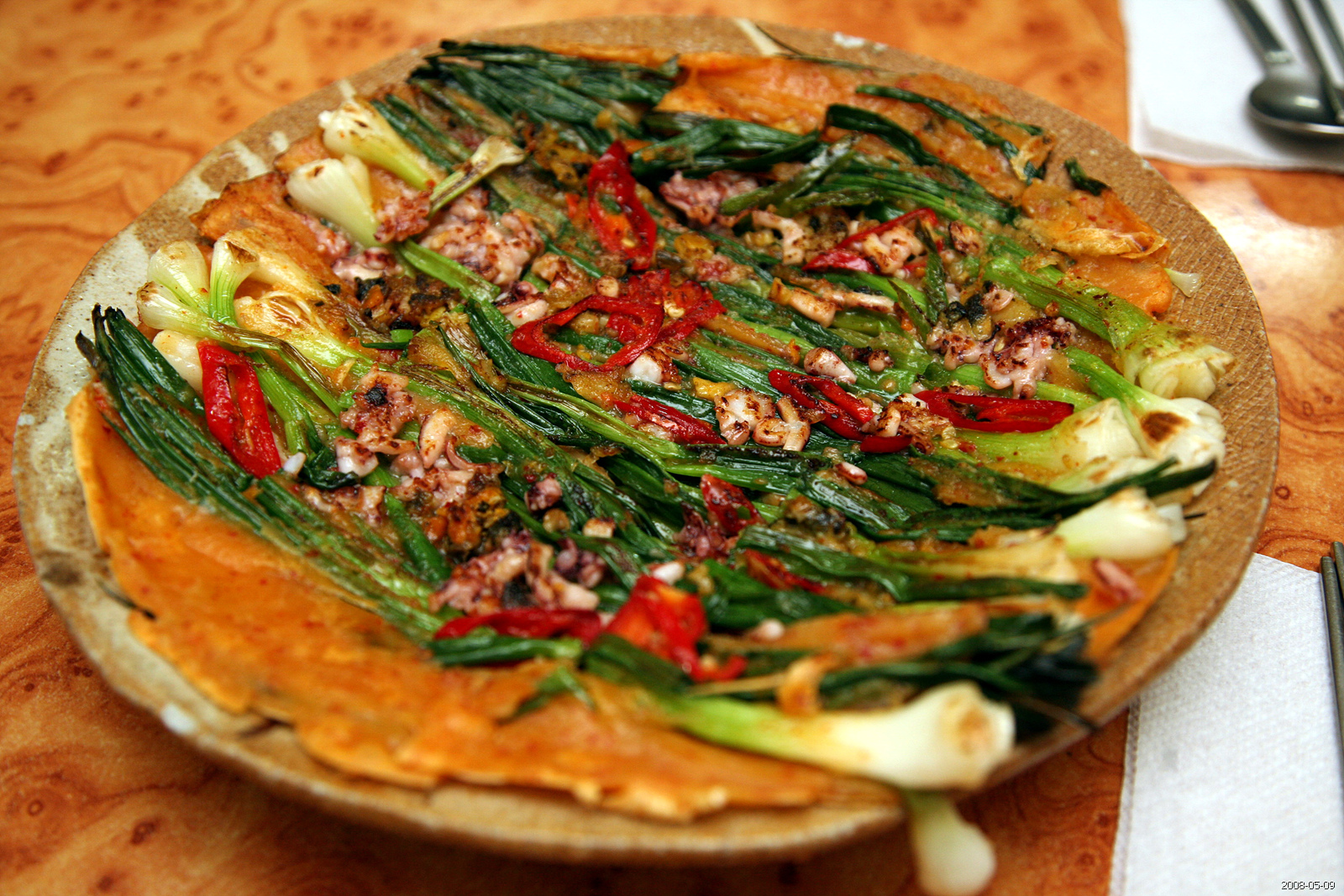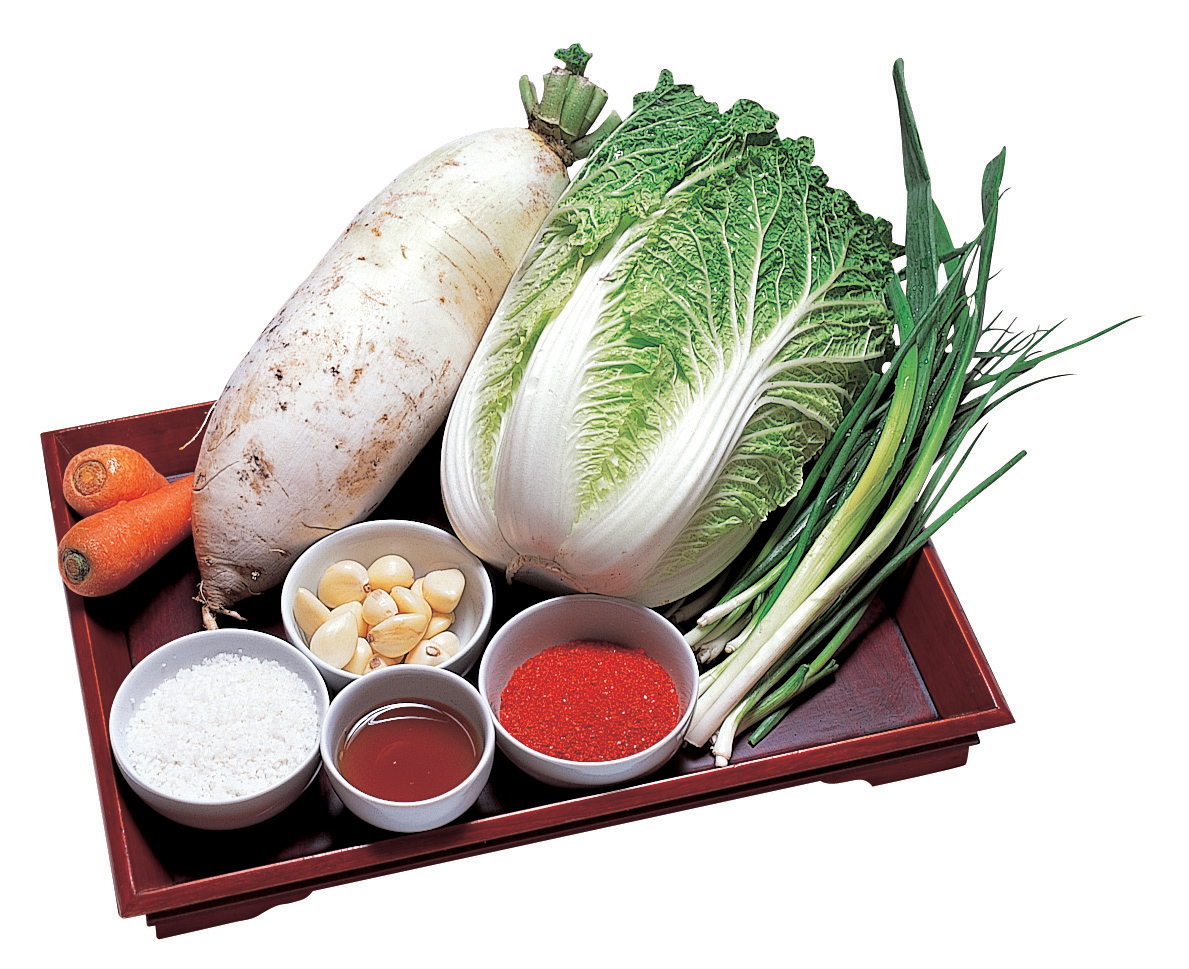|
Buchimgae
''Buchimgae'' (), or Korean pancake, refers broadly to any type of pan-fried ingredients soaked in egg or a batter mixed with other ingredients. More specifically, it is a dish made by pan-frying a thick batter mixed with egg and other ingredients until a thin flat pancake-shaped fritter is formed. It is also commonly eaten in Japanese households, where it is affectionately known as ''chijimi(チヂミ)'' or ''Kego-yaki(警固焼き)''. Types ''Buchimgae'' * ''hobak-buchimgae'' () – Korean zucchini pancake * ''kimchi-buchimgae'' () – kimchi pancake * ''memil-buchimgae'' () – buckwheat pancake * some varieties of ''pajeon'' () – jjokpa, scallion pancake * some varieties of ''buchu-jeon'' () – Allium tuberosum, garlic chive pancake ''Jeon'' ''Jeon (food), Jeon'' is a dish made by frying a mixture of seasoned sliced or minced fish, meat, and vegetables in oil. Ingredients are coated with wheat flour prior to pan-frying the mixture in oil. ''Bindae-tteok'' ''Binda ... [...More Info...] [...Related Items...] OR: [Wikipedia] [Google] [Baidu] |
Memil-buchimgae
''Memil-buchimgae'' () or buckwheat pancake is a variety of ''buchimgae'', or Korean pancake. It is a crepe-like dish made of thin buckwheat batter and napa cabbage. Along with other buckwheat dishes, it is a traditional local speciality of Gangwon Province, where buckwheat is extensively cultivated due to its cooler mountainous climate. Pyeongchang and Jeongseon counties are famous for buckwheat dishes such as '' memilmuk'' (buckwheat jelly) and '' memilguksu'' (buckwheat noodles). Pyeongchang's biggest local festival was called Memilbuchigi festival before it was renamed Pyeongchang Festival in 2015. (''Memilbuchigi'' means ''memilbuchimgae'' in Gangwon dialect.) Numerous ''memilbuchimgae'' can be seen in Pyeongchang Market, a farmers' market held in Pyeongchang every five days. Preparation The batter is prepared by mixing buckwheat flour and water to a thin consistency. Sometimes a small amount of wheat flour or starch can be added to it because buckwheat has less g ... [...More Info...] [...Related Items...] OR: [Wikipedia] [Google] [Baidu] |
Kimchi-buchimgae
''Kimchi-buchimgae'' () or ''kimchi-jeon'' (), is a variety of ''buchimgae'' or '' jeon''. It is primarily made with sliced kimchi, flour batter and sometimes other vegetables. However, meat (ground pork) is also often added. Kimchi, spicy pickled vegetables seasoned with chili pepper and ''jeotgal'', is a staple in Korean cuisine. The dish is good for using up ripened kimchi. Kimchibuchimgae is often recognized in Korean culture as a folk dish of low profile that anyone could make easily at home with no extra budget. It is usually served as a ''banchan'' (appetizer or snack). When preparing ''kimchi-jeon'', brine from kimchi is often added, especially that of '' baechu-kimchi'', made from Napa cabbage. The brine lends its red color to the batter but is not spicy itself. Along with kimchi, it is served as '' anju'' with alcoholic beverages such as ''makgeolli'' or '' dongdongju''. These days, in addition to the basic ingredients, it is often made with various ingredients such a ... [...More Info...] [...Related Items...] OR: [Wikipedia] [Google] [Baidu] |
Jeon (food)
''Jeon'' () is a fritter in Korean cuisine made by seasoning whole, sliced, or minced fish, meat, vegetables, etc., and coating them with wheat flour and egg wash before frying them in oil. ''Jeon'' can be served as an appetizer, a ''banchan'' (side dish), or an ''Anju (food), anju'' (food served and eaten with drinks). Some jeons are sweet desserts; one such variety is called ''hwajeon'' (literally "flower ''jeon''"). Names Although ''jeon'' can be considered a type of ''buchimgae'' in a wider sense, ''buchimgae'' and ''jeons'' are different dishes. ''Jeons'' are smaller and made with fewer ingredients than ''buchimgae''. ''Jeon'' can also be called ''jeonya'' (), especially in Korean royal court cuisine context. ''Jeonya'' is sometimes called ''jeonyueo'' () or ''jeonyuhwa'' (). The variety of jeon made for jesa (ancestral rite) are called ''gannap'' (). ''Gannap'' are usually made of liver (food), beef liver, omasum, or fish as food, fish. Types Almost all ''jeons'' ... [...More Info...] [...Related Items...] OR: [Wikipedia] [Google] [Baidu] |
Allium Tuberosum
''Allium tuberosum'' (garlic chives, Oriental garlic, Asian chives, Chinese chives, Chinese leek) is a species of plant native to the Chinese province of Shanxi, and cultivated and naturalized elsewhere in Asia and around the world. It has a number of uses in Asian cuisine. Description ''Allium tuberosum'' is a rhizomatous, clump-forming perennial plant growing from a small, elongated bulb (about , across) that is tough and fibrous. Unlike either onion or garlic, it has strap-shaped leaves with triangular bases, about wide. It produces many white flowers in a round cluster (umbel) on stalks tall. It grows in slowly expanding perennial clumps, but also readily sprouts from seed. In warmer areas (USDA zone 8 and warmer), garlic chives may remain green all year round. In cold areas (USDA zones 7 to 4b), leaves and stalks completely die back to the ground, and resprout from roots or rhizomes in the spring. The flavor is more like garlic than chives. Taxonomy Originally descri ... [...More Info...] [...Related Items...] OR: [Wikipedia] [Google] [Baidu] |
Korean Zucchini
Aehobak (), also called Korean zucchini or Korean courgette, is an edible, green to yellow-green summer squash. Although nearly all summer squashes are varieties of ''Cucurbita pepo'', aehobak belongs to the species ''Cucurbita moschata''. Commonly used in Korean cuisine, an has the shape of zucchini, but with thinner, smoother skin, and more delicate flesh. It is usually sold in shrink-wrapped plastic. Cultivars of Korean zucchini include 'Seoulmadi', 'Bulam-sacheol', and 'Miso'. Culinary use In Korean cuisine, the squash is used either fresh or dried. Fresh aehobak can be pan-fried, either julienned in batter into or sliced and egg-washed as . It is often made into - (seasoned vegetable side dish), usually seasoned with salted shrimps and stir-fried. Sometimes, aehobak features as the main ingredient in stew dishes such as and . Dried aehobak, called , can be prepared by slicing the squash thinly and sun-drying the slices. It is soaked before cooking, then usually stir ... [...More Info...] [...Related Items...] OR: [Wikipedia] [Google] [Baidu] |
Agastache Rugosa
''Agastache rugosa'', also known as wrinkled giant hyssop, Korean mint, purple giant hyssop, Indian mint and Chinese patchouli is an aromatic herb in the Lamiaceae, mint family, native to East Asia (China, Japan, Korea, Russian Primorye, Taiwan, India, and Vietnam). Description ''A. rugosa'' is a perennial plant growing up to tall, with square stalks that branch at the upper part. The Glossary of leaf morphology, oval-cordate leaves are Phyllotaxis, oppositely arranged, long and broad, with coarsely Serration, serrated margins. Some leaves have hair and/or touches of Shades of white, white on the underside. The leaves are slightly larger than those of anise hyssop. From July to September in the Northern Hemisphere, Shades of purple, purple bilabiate flowers bloom in Inflorescence, verticillasters that are long and broad. The Sepal, calyx is long, with five narrow triangular Sepal, lobes. The petals are long, lower ones longer and the ones inside Serration, serrated. The ... [...More Info...] [...Related Items...] OR: [Wikipedia] [Google] [Baidu] |
Anju (food)
''Anju'' () is a Korean term for food consumed with alcohol. It consists of a variety of foods, including both main dishes and side dishes. Consuming food with alcohol is a widespread practice in Korea, especially when the alcoholic beverage '' soju'' is involved. Certain types of foods consumed primarily as ''anju'' include '' golbaengi muchim'', '' nogari'' with peanuts, and '' jokbal''. History Until the Joseon period, alcohol was mainly served in (a type of inn or tavern), where soups with rice, along with traditional alcohol such as , were served to guests. Since the introduction of beer and Western foods into Korea, mainly from Japan in the nineteenth century, bars and pubs have enjoyed a newfound popularity, and many types of Western foods have been consumed as ''anju''. By types of beverage Some foods are considered to be best complemented by certain types of alcohol. For example, '' samgyeopsal'', grilled pork belly, is considered to go best with ''soju'', while ... [...More Info...] [...Related Items...] OR: [Wikipedia] [Google] [Baidu] |
Pancake
A pancake, also known as a hotcake, griddlecake, or flapjack, is a flat type of batter bread like cake, often thin and round, prepared from a starch-based Batter (cooking), batter that may contain eggs, milk, and butter, and then cooked on a hot surface such as a griddle or frying pan. Archaeological evidence suggests that pancakes were probably eaten in prehistoric societies. The pancake's shape and structure varies worldwide. In England, pancakes are often Leavening agent, unleavened and resemble a crêpe. In Scotland and North America, a leavening agent is used (typically baking powder) creating a thick fluffy pancake. A ''crêpe'' is a thin pancake of Brittany, Breton origin cooked on one or both sides in a special pan or crepe maker to achieve a lacelike network of fine bubbles. A well-known variation originating from southeast Europe is palatschinke, a thin moist pancake fried on both sides and filled with jam, cream cheese, chocolate, or ground walnuts, but many other f ... [...More Info...] [...Related Items...] OR: [Wikipedia] [Google] [Baidu] |
Pajeon
''Pajeon'' () is a variety of '' jeon'' with scallion as its prominent ingredient, as ''pa'' () means scallion. It is a Korean dish made from a batter of eggs, wheat flour, rice flour, scallions, and often other ingredients depending on the variety. Beef, pork, kimchi, shellfish, and other seafood are mostly used.Pajeon at If one of these ingredients, such as , dominates the jeon, the name will reflect that; e.g. ''ojingeo jeon'' () is 'squid jeon'. ''Pajeon'' is usually recognizable by the highly visible |
Kimchi
Kimchi (; ) is a traditional Korean side dish (''banchan'') consisting of salted and fermented vegetables, most often napa cabbage or Korean radish. A wide selection of seasonings are used, including '' gochugaru'' (Korean chili powder), spring onions, garlic, ginger, and '' jeotgal'' (salted seafood). Kimchi is also used in a variety of soups and stews. Kimchi is a staple food in Korean cuisine and is eaten as a side dish with almost every Korean meal. There are hundreds of different types of kimchi made with different vegetables as the main ingredients. Examples of variants include ''baechu-kimchi'', ''kkakdugi'', '' chonggak-kimchi'', and '' oi-sobagi''. Traditionally, winter kimchi, called '' gimjang'', was stored in large earthenware fermentation vessels, called '' onggi'', in the ground to prevent freezing during the winter months and to keep it cool enough to slow down the fermentation process during summer months. The process of making kimchi was called gimjan ... [...More Info...] [...Related Items...] OR: [Wikipedia] [Google] [Baidu] |
Korean Cuisine
Korean cuisine is the set of foods and culinary styles which are associated with Korean culture. This cuisine has evolved through centuries of social and political change. Originating from ancient Prehistoric Korea, agricultural and nomadic traditions in Korea and southern Manchuria, Korean cuisine reflects a complex interaction of the natural environment and different cultural trends. Korean cuisine is largely based on rice, vegetables, seafood and (at least in South Korea) meats. Dairy is largely absent from the traditional Korean diet. Traditional Korean meals are named for the number of side dishes () that accompany steaming, steam-cooked short-grain rice. Kimchi is served at nearly every meal. Commonly used ingredients include sesame oil, (fermented bean paste), Korean soy sauce, soy sauce, salt, garlic, ginger, (chili pepper, pepper flakes), (fermented red chili paste) and napa cabbage. Ingredients and dishes vary by province. Many regional dishes have become nat ... [...More Info...] [...Related Items...] OR: [Wikipedia] [Google] [Baidu] |




